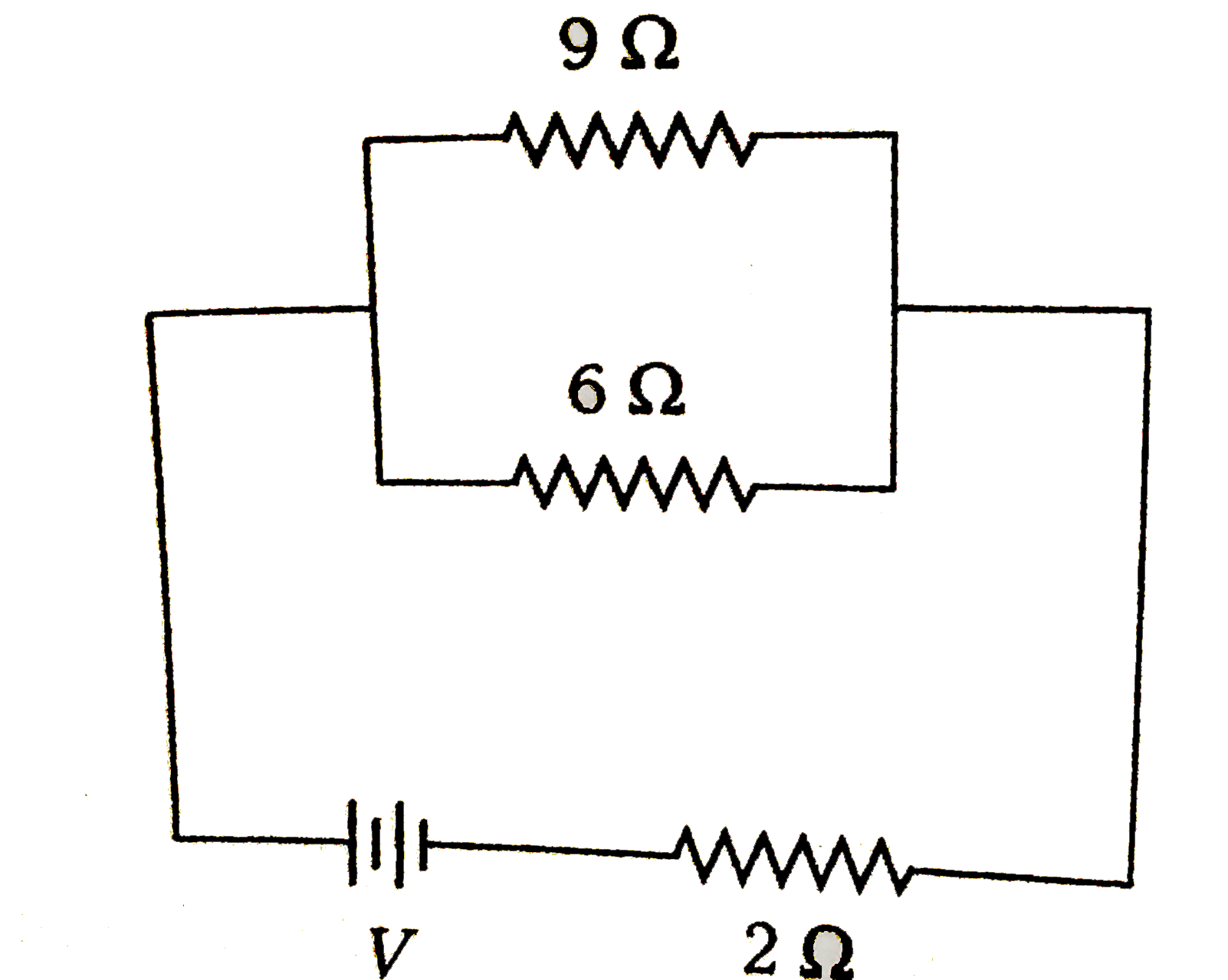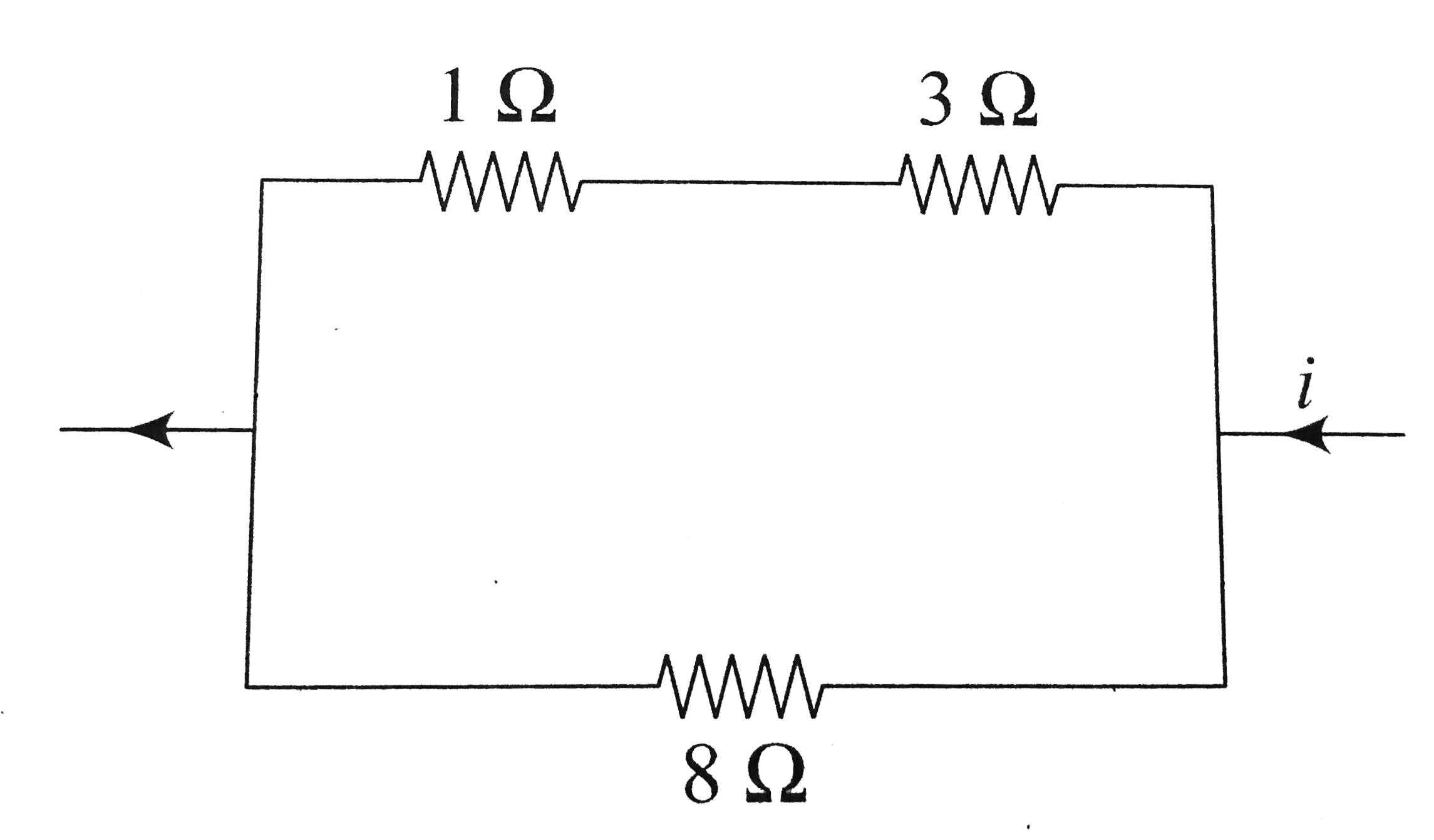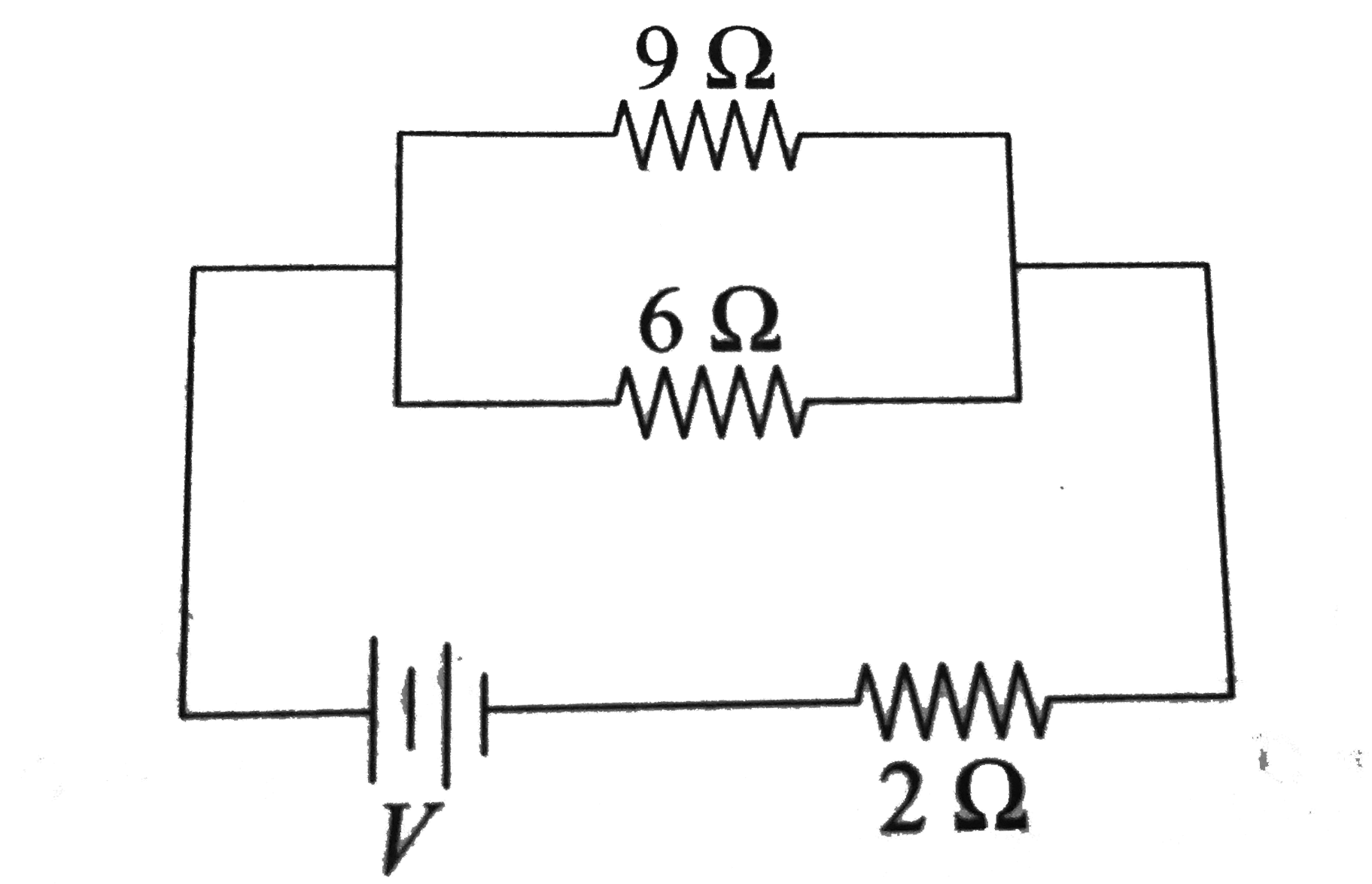If power dissipated in the 9Ω resistor in the circuit shown is 36 W, the potential difference across the 2Ω resistor is

The correct Answer is:−mv2sin(v2)Rtˆi+m(v2cosv2Rt−v1)ˆj

→v2=(−v2sinωtˆi+v2cosωtˆj) and →v1=v1ˆj
→v21=→v2−→v1=−v2sinωtˆi+(v2cosωt−v1)ˆj
→p21=m→v21=−mv2sinωtˆi+m(v2cosωt−v1)ˆj
where ω=v2R
Topper's Solved these Questions
- CURRENT ELECTRICITYBOOK - ALLENCHAPTER - CURRENT ELECTRICITYEXERCISE - EX.II
66 Videos
- CURRENT ELECTRICITYBOOK - ALLENCHAPTER - CURRENT ELECTRICITYEXERCISE - EXERCISE-V A
20 Videos
- CIRCULAR MOTIONBOOK - ALLENCHAPTER - CIRCULAR MOTIONEXERCISE - EXERCISE (J-A)
6 Videos
- GEOMETRICAL OPTICSBOOK - ALLENCHAPTER - GEOMETRICAL OPTICSEXERCISE - subjective
14 Videos
Similar Questions
Knowledge Check
A voltmeter having a resistance of 1800Ω employed to measure the potential difference across a 200Ω resistor which is connected to the terminals of a dc power supply having an emf of 50 V and an internal resistance of 20Ω. What is the percentage decrease in the potential difference across the 200Ω resistor as a result of connecting the voltmeter across it?
A1%B5%C10%D25%
The potential drop across the 3Ω resistor is

View SolutionPower dissipated across the 8Ω resistor in the circuit shown here is 2 w. The power U dissipated in watt units across the 3Ω resistor is .
View SolutionPower dissipated across the 8Ω in the circuit shown here is 2W. The power dissiated in watt units across the 3Ω is

View SolutionFor the circuit shown in figure, determine the voltage across 4Ω resistors in volt ?

View SolutionFind the current through 4Ω resistor in the circuit shown in figure.

View SolutionAn inductor of inducance 5.0 H, having a negligible resistance, is connected in series with a 100Ω resistor and a battery of emf 2.0 V. Find the potential difference across the resistor 20 ms after the circuit is switched on.
View SolutionDraw a circuit diagram of an electric circuit containing a cell, a key, an ammeter, a resistance of 2Ω in series with a combination of two resistors (4Ω each) in parallel and a voltmeter across the parallel combination. Will the potential difference across the 2Ω resistor be the same as that across the parallel combination of 4Ω resistors ? Give reason.
View Solution


